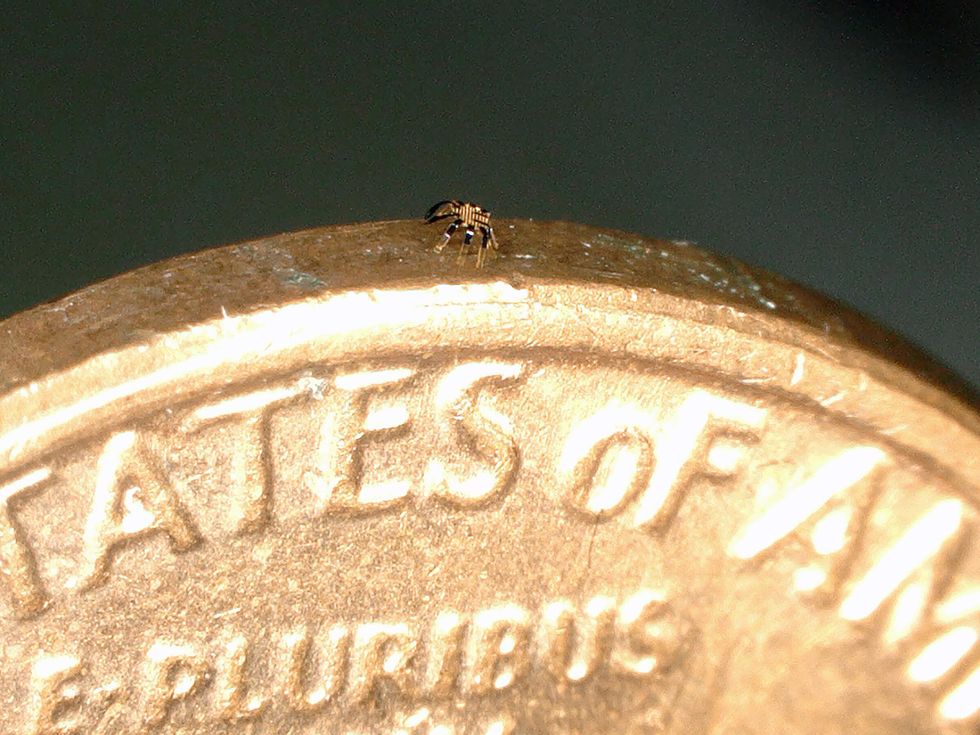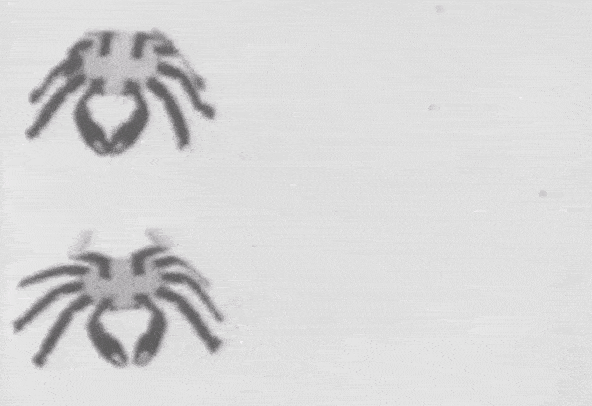Flea-Sized Robots Walk a Coin-Edge-Sized Path

Microrobotics engineers often turn to nature to inspire their builds. A group of researchers at Northwestern University have picked the peekytoe crab to build a remote-controlled microbot that is tiny enough to walk comfortably on the edge of a coin.
According to John A. Rogers, the lead investigator of the study, their work complements that of other scientists who are working on millimeter-scale robots, for example, worm-like structures that can move through liquid media with flagella. But to the best of his knowledge, their crab microbots are the smallest terrestrial robots-just half a millimeter wide-to walk on solid surfaces in open air.
The tiny robot moves with a scuttling motion thanks to shape memory alloys (SMA). This class of materials undergoes a phase transition at a certain temperature, triggering a shape change. So you create material in an initial geometry, deform it, and then when you heat it up, it'll go back to that initial geometry," Rogers says. We exploit the shape changes [as] the basis of kind of a mechanical actuator or kind of a muscle."
To move the robot, lasers heat its legs" in sequence; the shape memory alloy in each leg bends in response to the heat-and then returns to its original orientation upon cooling.
 Northwestern University
Northwestern University
The robot comprises three key materials-an electronics-grade polymer for the body and parts of the limbs; the SMA, which forms the active" component; and a thin layer of glass as an exoskeleton to give the structure rigidity. Rogers adds that they are not constrained by these particular materials, however, and his team are looking at ways to integrate semiconducting materials and other kinds of conductors.
For movement, the researchers use the focus spot of a laser beam on the robot body. Whenever the laser beam illuminates the shape memory alloy components of the robot, you induce [its] phase change and corresponding motion," Rogers says, and when the laser beam moves off, you get a fast cooling and the limb returns to the deformed geometry." Thus, scanning the laser spot across the body of the robot can sequentially activate various joints, and thereby establish a gait and direction for motion.
 Northwestern University
Northwestern University
Though this method has its advantages, Rogers would like to explore more options. With the laser, you need some kind of optical access... [but depending] on where you want the robot to operate, that approach is going to be feasible or not," says Rogers.
This is not the first time Rogers has had a hand in creating submillimeter-sized robots. His lab has developed tiny structures resembling worms and beetles, and even a winged microchip that moves through the air passively, using the same principles as the wind dispersal of seeds.
In 2015, Rogers and his colleagues also published a paper about using the concepts of kirigami, the Japanese art of paper cutting, as seen in pop-up books, for example, to design their robots. They use high-fidelity multilayer stacks of patterned materials supported by a silicon wafer, but while those are great for integrated circuits, they're no good for robots," says Rogers, as they are flat. To move them into the third dimension, studying the principles of kirigami was a starting point.
As Rogers emphasizes, their research is purely exploratory at the moment, an attempt to introduce some some additional ideas into microrobotic engineering. We can move these robots around, make them walk in different directions, but they don't execute a specific task," he says. For example, even though the crab-bots have claws, these are just for visual purposes, they don't move or grasp objects. Creating capabilities for task execution would be a next step in research in this area," he says. For now, though, making multi-material 3D structures and using SMAs for two-way actuation are the two key pieces of contribution to the broader community from his team.
For further exploration, he and his colleagues are thinking about how to add the ability to grasp or manipulate objects at this scale, as well as adding microcircuits, digital sensors, and wireless communication to the bots. Communication between the robots could allow them to operate as a swarm, for instance. Another area to work on is adding some kind of local power supply, powered by photovoltaics, for example, with a microcontroller to provide local heating in a timed sequence to control movement.
In terms of potential applications, Rogers envisages the tiny robots to be useful for working in confined spaces, primarily for minimally invasive surgeries, followed by vehicles for building other tiny machines. But he also advocates caution: I wouldn't want to oversell what we've done. It's pretty easy to slide into fantastical visions of these robots getting in the body and doing something powerful in terms of medical treatment. [But] that's where we'd like to go, and it's what's motivating a lot of our work."